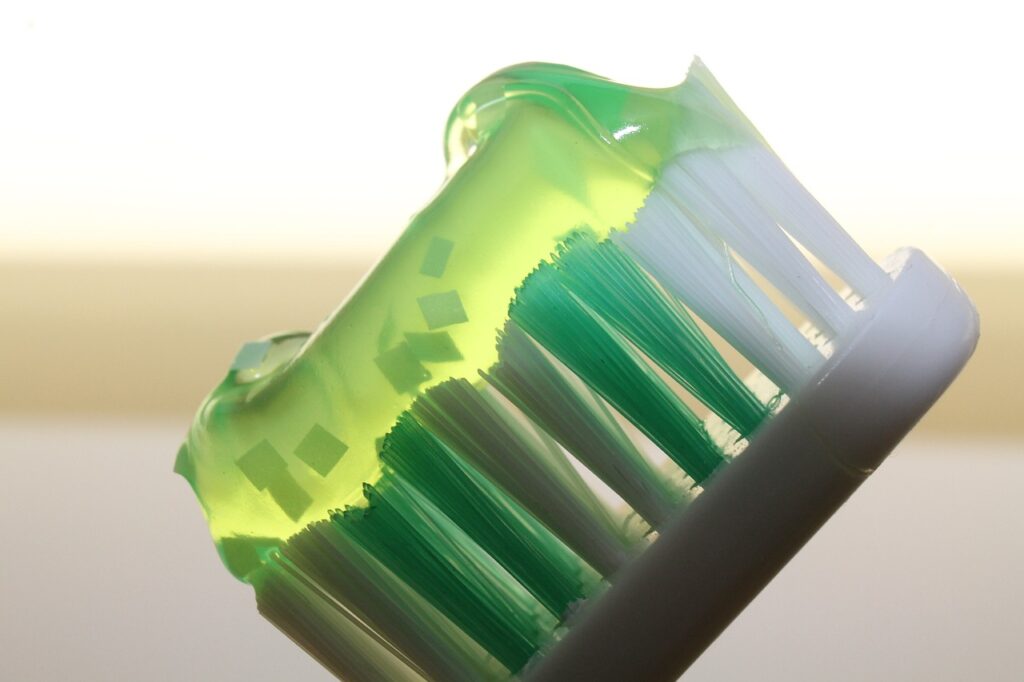With the myriad of toothpaste options available, it can be overwhelming to choose the right one. Understanding the ingredients in toothpaste and their benefits can help you make an informed decision. Xieng Lee DDS looks into the common ingredients found in toothpaste and how they contribute to oral health.

Fluoride
Fluoride is a naturally occurring mineral proven to strengthen tooth enamel, making it more resistant to acid attacks from plaque bacteria and sugars in the mouth. By remineralizing the enamel, fluoride can reverse the early stages of tooth decay and prevent cavities. It is considered a crucial ingredient in toothpaste for optimal oral health, especially when water is not fluoridated. However, excessive fluoride intake can lead to dental fluorosis, so it’s important to use fluoride toothpaste as directed.
Calcium Carbonate
Calcium carbonate is a gentle abrasive that helps to remove plaque and surface stains from teeth without damaging the enamel. Its abrasive nature also contributes to the toothpaste’s cleaning ability, leaving your teeth feeling smooth and clean after brushing. Additionally, calcium carbonate helps to neutralize acid in the mouth, which can help prevent tooth decay and gum disease. It is an effective and safe ingredient commonly found in toothpaste formulations.
Silica
Silica is another abrasive agent in toothpaste that helps to remove plaque and stains from teeth, giving them a polished appearance. It is known for its mild abrasiveness, making it gentle enough to use daily without causing damage to the enamel. Silica also helps to improve the texture of toothpaste, giving it a smooth consistency that is easy to apply to your toothbrush. Overall, silica contributes to the cleaning and polishing action of toothpaste, promoting good oral hygiene.
Sodium Lauryl Sulfate (SLS)
SLS is a surfactant that helps to create foam in toothpaste, allowing it to spread easily throughout the mouth and reach all areas of the teeth and gums. While it is effective in cleaning, some people may experience sensitivity to SLS, which can lead to irritation of the gums or mouth. For those with sensitive gums, it may be beneficial to choose a toothpaste that is SLS-free. However, SLS is generally considered safe for most people and is approved for use in oral care products by regulatory bodies.
Humectants
Humectants like glycerin and sorbitol are added to toothpaste to prevent it from drying out and maintain its texture. They also help to keep your mouth moist after brushing, preventing dryness and discomfort. Humectants are essential in toothpaste formulations to ensure that the product remains effective and pleasant to use. Their moisturizing properties contribute to a more comfortable brushing experience and help improve the toothpaste’s overall effectiveness.
Flavoring Agents
Flavoring agents are added to toothpaste to enhance the taste and freshen the breath after brushing. Common flavoring agents include mint and fruit extracts, which not only enhance the taste of toothpaste but also leave a refreshing sensation in the mouth. While these agents do not contribute directly to oral health, they are crucial in improving the overall brushing experience. Including flavoring agents in toothpaste formulations helps to encourage regular brushing and maintain good oral hygiene habits.
Preservatives
Preservatives like sodium benzoate or parabens are added to toothpaste to prevent bacterial growth and ensure the product remains safe throughout its shelf life. These preservatives help maintain the toothpaste’s integrity and prevent contamination that could compromise its effectiveness. While there has been some concern about the safety of certain preservatives in personal care products, using preservatives in toothpaste is generally considered safe when used as directed. They are essential for maintaining the stability and safety of toothpaste formulations, ensuring they remain effective for daily oral care.
Desensitizing Agents
Desensitizing agents like potassium nitrate or strontium chloride are added to some toothpaste formulations to help reduce tooth sensitivity. These agents block pain signals from the tooth surface to the nerve, providing relief for those with sensitive teeth. While they do not treat the underlying cause of tooth sensitivity, they can help manage symptoms and improve comfort during brushing. Desensitizing toothpaste is often recommended for individuals who experience sensitivity to hot, cold, or sweet foods and beverages.
Conclusion
Xieng K Lee reminds everyone that while these ingredients are commonly found in toothpaste, formulations may vary, and some brands may include additional ingredients for specific purposes such as whitening or tartar control. When choosing a toothpaste, consider your specific oral health needs and look for products that address those concerns. Additionally, remember to brush your teeth twice daily for two minutes each time and visit your dentist regularly for check-ups and professional cleanings.
